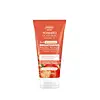What's inside
What's inside
 Key Ingredients
Key Ingredients

 Benefits
Benefits

 Concerns
Concerns

 Ingredients Side-by-side
Ingredients Side-by-side

Water
Skin ConditioningCyclopentasiloxane
EmollientSilica
AbrasiveButyl Methoxydibenzoylmethane
UV AbsorberEthylhexyl Methoxycinnamate
UV AbsorberGlyceryl Stearate
EmollientPEG-100 Stearate
Caprylic/Capric Triglyceride
MaskingPropanediol
SolventPhenoxyethanol
PreservativeOctocrylene
UV AbsorberCetyl Alcohol
EmollientNiacinamide
SmoothingTitanium Dioxide
Cosmetic ColorantSodium Hyaluronate Crosspolymer
HumectantSodium Hyaluronate
HumectantHydrolyzed Sodium Hyaluronate
Skin ConditioningHyaluronic Acid
HumectantHydrolyzed Hyaluronic Acid
HumectantSodium Acetylated Hyaluronate
HumectantHydrolyzed Glycosaminoglycans
HumectantSaccharide Isomerate
HumectantHydrogenated Phosphatidylcholine
EmulsifyingGlycerin
HumectantButyrospermum Parkii Butter
Skin ConditioningSqualane
EmollientCeramide NP
Skin ConditioningPentylene Glycol
Skin ConditioningButylene Glycol
HumectantTalc
AbrasiveDimethicone
EmollientEthylhexylglycerin
Skin ConditioningLecithin
EmollientAcrylates/C10-30 Alkyl Acrylate Crosspolymer
Emulsion StabilisingLauroyl Lysine
Skin ConditioningAluminum Hydroxide
EmollientTriethanolamine
BufferingXanthan Gum
EmulsifyingCitric Acid
BufferingSodium Citrate
BufferingTetrasodium EDTA
CI 77491
Cosmetic ColorantCI 77492
Cosmetic ColorantCI 77499
Cosmetic ColorantWater, Cyclopentasiloxane, Silica, Butyl Methoxydibenzoylmethane, Ethylhexyl Methoxycinnamate, Glyceryl Stearate, PEG-100 Stearate, Caprylic/Capric Triglyceride, Propanediol, Phenoxyethanol, Octocrylene, Cetyl Alcohol, Niacinamide, Titanium Dioxide, Sodium Hyaluronate Crosspolymer, Sodium Hyaluronate, Hydrolyzed Sodium Hyaluronate, Hyaluronic Acid, Hydrolyzed Hyaluronic Acid, Sodium Acetylated Hyaluronate, Hydrolyzed Glycosaminoglycans, Saccharide Isomerate, Hydrogenated Phosphatidylcholine, Glycerin, Butyrospermum Parkii Butter, Squalane, Ceramide NP, Pentylene Glycol, Butylene Glycol, Talc, Dimethicone, Ethylhexylglycerin, Lecithin, Acrylates/C10-30 Alkyl Acrylate Crosspolymer, Lauroyl Lysine, Aluminum Hydroxide, Triethanolamine, Xanthan Gum, Citric Acid, Sodium Citrate, Tetrasodium EDTA, CI 77491, CI 77492, CI 77499
Solanum Lycopersicum Fruit Extract
AntioxidantButylene Glycol
HumectantHyaluronic Acid
HumectantCellulose
AbsorbentMicrocrystalline Cellulose
AbsorbentGlycolic Acid
BufferingCentella Asiatica Extract
CleansingWater
Skin ConditioningCarbomer
Emulsion StabilisingLycopene
AntioxidantPhenoxyethanol
PreservativeChlorphenesin
AntimicrobialParfum
MaskingMandelic Acid
AntimicrobialArbutin
AntioxidantCitric Acid
BufferingDisodium EDTA
Glycyrrhiza Glabra Root Extract
BleachingPyrus Malus Fruit Extract
Skin ConditioningCitrus Junos Fruit Extract
Skin ConditioningChamomilla Recutita Flower Extract
MaskingLavandula Angustifolia Extract
Skin ConditioningSolanum Lycopersicum Fruit Extract, Butylene Glycol, Hyaluronic Acid, Cellulose, Microcrystalline Cellulose, Glycolic Acid, Centella Asiatica Extract, Water, Carbomer, Lycopene, Phenoxyethanol, Chlorphenesin, Parfum, Mandelic Acid, Arbutin, Citric Acid, Disodium EDTA, Glycyrrhiza Glabra Root Extract, Pyrus Malus Fruit Extract, Citrus Junos Fruit Extract, Chamomilla Recutita Flower Extract, Lavandula Angustifolia Extract
 Reviews
Reviews

Ingredients Explained
These ingredients are found in both products.
Ingredients higher up in an ingredient list are typically present in a larger amount.
Butylene Glycol (or BG) is used within cosmetic products for a few different reasons:
Overall, Butylene Glycol is a safe and well-rounded ingredient that works well with other ingredients.
Though this ingredient works well with most skin types, some people with sensitive skin may experience a reaction such as allergic rashes, closed comedones, or itchiness.
Learn more about Butylene GlycolCitric Acid is an alpha hydroxy acid (AHA) naturally found in citrus fruits like oranges, lemons, and limes.
Like other AHAs, citric acid can exfoliate skin by breaking down the bonds that hold dead skin cells together. This helps reveal smoother and brighter skin underneath.
However, this exfoliating effect only happens at high concentrations (20%) which can be hard to find in cosmetic products.
Due to this, citric acid is usually included in small amounts as a pH adjuster. This helps keep products slightly more acidic and compatible with skin's natural pH.
In skincare formulas, citric acid can:
While it can provide some skin benefits, research shows lactic acid and glycolic acid are generally more effective and less irritating exfoliants.
Most citric acid used in skincare today is made by fermenting sugars (usually from molasses). This synthetic version is identical to the natural citrus form but easier to stabilize and use in formulations.
Read more about some other popular AHA's here:
Learn more about Citric AcidHyaluronic acid is naturally found in healthy skin. It is a humectant, meaning it draws moisture to your skin.
This ingredient helps hydrate, soothe, and protect the skin.
What makes hyaluronic acid so hydrating? It has the capacity to bind or hold large amounts of water.
Fun fact: It is already naturally found in our bodies, such as the fluids of our eyes and our joints.
Studies find this ingredient to have anti-inflammatory and anti-microbial properties. This can help speed up wound-healing.
Hyaluronic acid can be irritating if the molecule has a low-molecular weight, or if the molecules are small.
One study found low-molecular weight hyaluronic acid to be pro-inflammatory, meaning some people may experience irritation. This is because our bodies use hyaluronic acid in the wound-healing process to signal to our bodies, via irritation, that something needs healing.
The same study found high-molecular weight hyaluronic acid to be anti-inflammatory.
These are some other common types of Hyaluronic Acid:
Learn more about Hyaluronic AcidPhenoxyethanol is a preservative that has germicide, antimicrobial, and aromatic properties. Studies show that phenoxyethanol can prevent microbial growth. By itself, it has a scent that is similar to that of a rose.
It's often used in formulations along with Caprylyl Glycol to preserve the shelf life of products.
Water. It's the most common cosmetic ingredient of all. You'll usually see it at the top of ingredient lists, meaning that it makes up the largest part of the product.
So why is it so popular? Water most often acts as a solvent - this means that it helps dissolve other ingredients into the formulation.
You'll also recognize water as that liquid we all need to stay alive. If you see this, drink a glass of water. Stay hydrated!
Learn more about Water